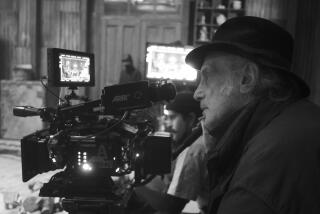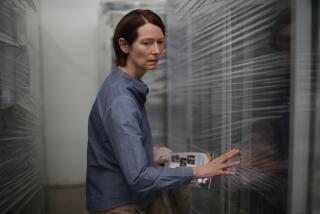‘Tiger’ chases romance, revenge and suspense
Wisit Sasanatieng’s exquisitely touching “Tears of the Black Tiger” evokes vintage Thai genre films with deep affection and respect. One part western, one part “women’s picture” melodrama with a “Romeo and Juliet” plot, the film is more pastiche than outright parody. On one level it is an amusing cataloging of genre conventions derived from the Golden Age of Hollywood, yet on another Sasanatieng engages the viewer’s emotions fully in the squaring away of the eternal triangle, involving young people who emerge as three-dimensional individuals even though they are archetypal.
This is no small feat, for his entire cast, including his three principals, play it absolutely straight, as in a Republic serial, connecting with the audience through sheer emotional intensity, thanks to Sasanatieng’s rigorous direction, sharp focus and superb mastery of tone.
Sasanatieng is furthermore a bold stylist, using a rich palette -- Jacques Demy’s “The Umbrellas of Cherbourg” comes to mind in this regard. Sasanatieng favors 19th century European-style settings, painting them with swaths of shocking pink, raspberry and turquoise, combined with natural settings as idyllic as calendar art, creating an aura of almost surreal artifice, all the better to set off genuine emotions further heightened by an inspired use of flashback.
A cornucopia of images composed with much formality and precision, “Tears of the Black Tiger” might be described as a work of camp pathos that actually transcends itself, skewering the cruel absurdities of rigid class distinctions while eschewing the nudges and winks of mere spoofery. The film is said to be indebted to Rattana Pestonji (1908-70), Thailand’s pioneering independent filmmaker, who mixed and parodied genres and experimented with daring color effects.
Dum (Chartchai Ngamsan) is the son of a peasant farmer and Rumpoey (Stella Malucchi) the daughter of the rich governor of Supandari. The two meet as adolescents and again cross paths in college in Bangkok, each encounter proving inadvertently disastrous for Dum yet cementing their undying love in the face of a cast-iron taboo against the intermixing of classes.
Their hope for a rendezvous in a pergola by the sea, the key setting of an ancient tale of ill-fated lovers, is sidetracked by the murder of Dum’s father, which leads to his joining a gang of bandits, taking the name Black Tiger, as a way to avenge his father’s death.
Meanwhile, a young police captain, Kumjorn (Arawat Ruangvuth), seeking to prove himself, has sought out a bandit-chasing assignment in Supandari -- and falls in love with Rumpoey, who is betrothed to him much against her will. Sasanatieng, who well understands the revelatory power of an ingenious plot, generates considerable suspense as to whether Dum and Rumpoey’s fate will be star-crossed.
It would seem that “Tears of the Black Tiger” takes place in the ‘50s, judging from Malucchi’s taut hairstyle and glamorous gowns -- her look recalls that of Julianne Moore in “Far From Heaven,” a film set in the ‘50s that also deals with the cruelty of social taboos in a stylized manner, with a bold use of color and a full-bodied score.
It is astonishing to realize that the highly confident “Tears of the Black Tiger” marks the directorial debut of Sasanatieng, after having written two movies hugely successful in Thailand, yet in truth he belongs to a long line of first-rate filmmakers who understand the wisdom of taking big chances the first time at bat.
“Tears of the Black Tiger.” MPAA rating: Unrated. Considerable though standard action movie violence but too intense for children. Running time: 1 hour, 53 minutes. Exclusively at the Nuart through Thursday, 11272 Santa Monica Blvd., West Los Angeles, (310) 281-8223.
More to Read
Only good movies
Get the Indie Focus newsletter, Mark Olsen's weekly guide to the world of cinema.
You may occasionally receive promotional content from the Los Angeles Times.







